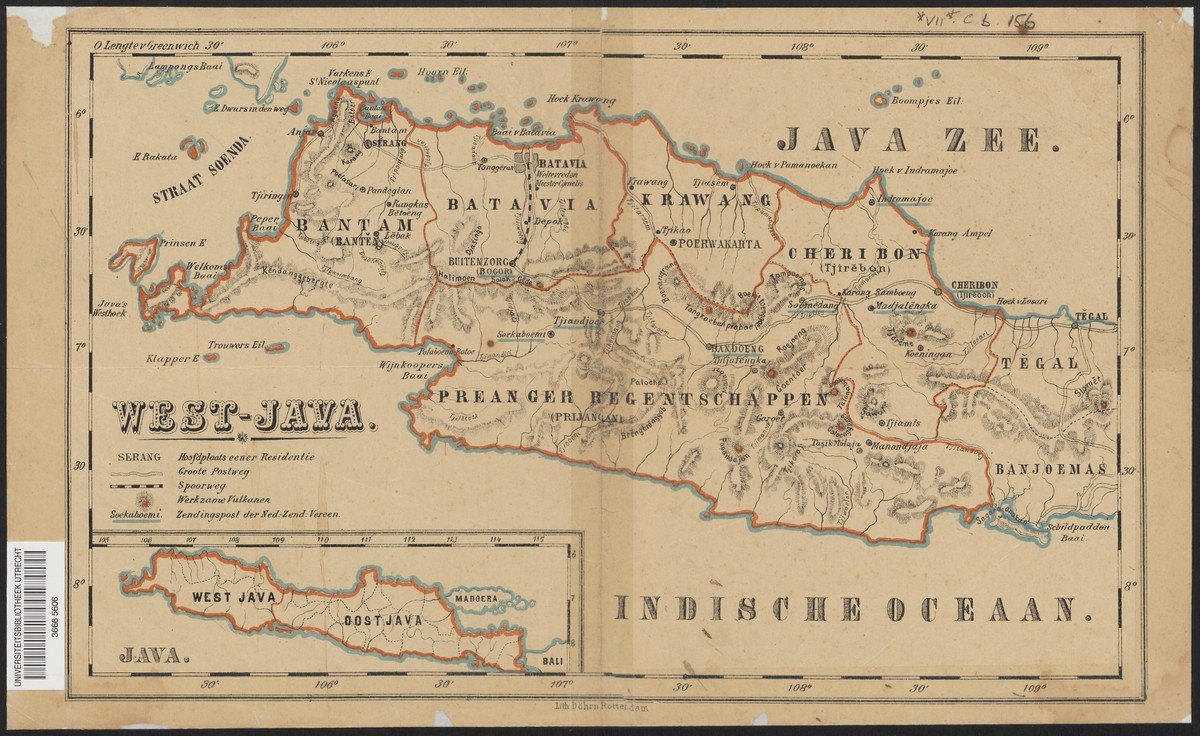West-Java, [1881]
This map from 1881 depicts West Java as a missionary and colonial area, with a relatively large amount of attention to infrastructure (railways and the Grote Postweg: a road that was nearly a thousand kilometers long and was built around 1810 for military purposes by means of forced labor). It is also remarkable that active volcanoes are explicitly mentioned in the legend. Mission posts of the Dutch Missionary Society (NZV) are underlined in blue. An inset map shows West Java as part of the entire island.
As is often the case with individual missionary maps, this copy is probably from a book. In this case it was probably folded into Sierk Coolsma’s, West Java: the land, the inhabitants and the labor of the Dutch Missionary Society (Rotterdam 1881). The NZV had split off in 1858 from the oldest association in the Netherlands, the Dutch Mission Fellowship (NZG), out of dissatisfaction with the latter's more liberal course. The association was led during this period by Coolsma, who had been a missionary to West Java and there translated the Bible into Sundanese. Mission to West Java was controversial because a relatively large number of Muslims lived there. The colonial government turned against missions in Islamic areas because it regularly disrupted public order. The publication was therefore also discouraged by the colonial government. Nevertheless, his Manual for the Practice of the Sundanese Language was used in schools in West Java and translated into Indonesian in 1985.


